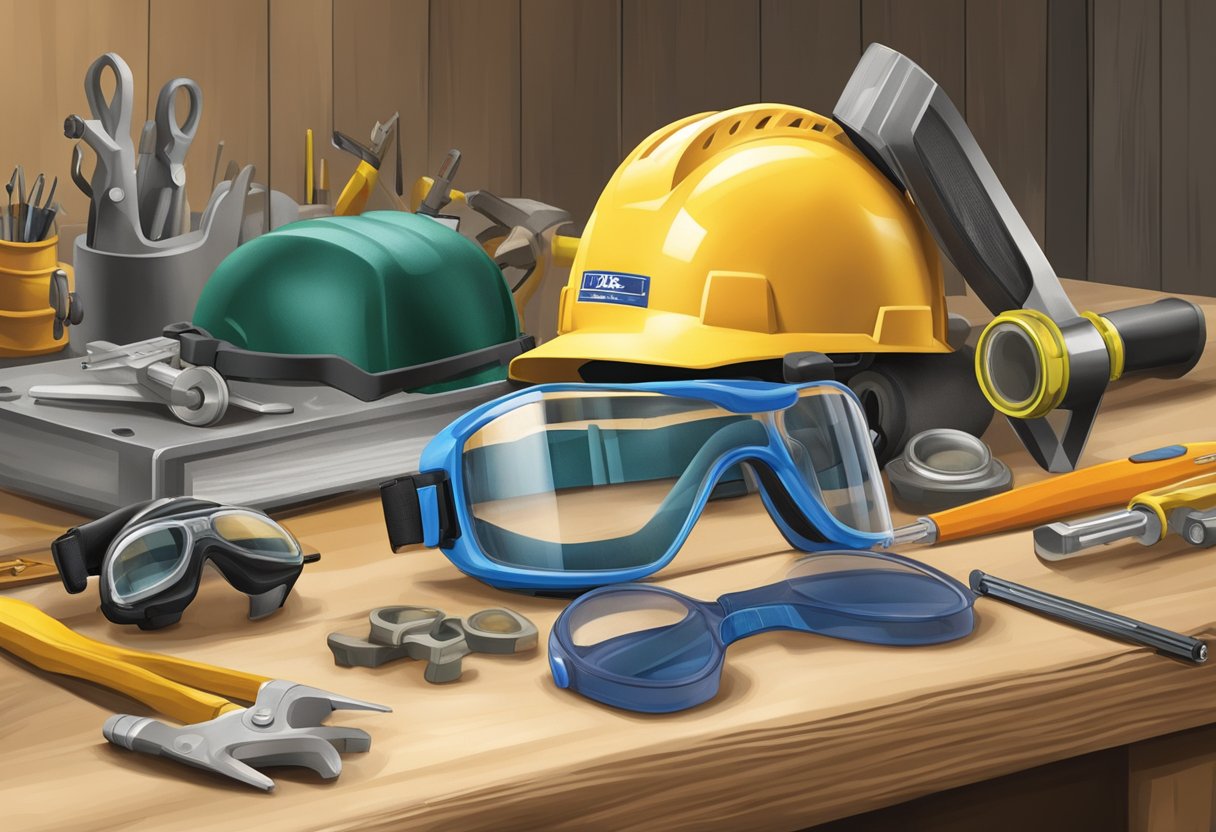Safety goggles are versatile personal protective equipment designed to shield the eyes from hazards in various settings. They are an absolute must-have for any DIYer, whether fixing cars or working on wood or any other surface. They protect against flying debris, chemicals, radiation, and infectious materials, making them indispensable for various activities.
Various hazards, including flying debris, chemicals, radiation, and infectious materials, can cause eye injuries. These hazards can cause severe eye damage, including blindness, significantly impacting an individual’s quality of life and ability to work. For instance, a chemical splash can lead to burns and permanent vision loss, while a penetrating injury can cause irreversible damage to the internal structures of the eye.
As reported by the CDC, nearly 2,000 American workers experience work-related eye injuries each day, necessitating medical attention. However, workers can significantly lessen the likelihood of eye injuries and safeguard their vision by donning safety goggles. Visit our site for more information on Ice Age Tools.
Key Takeaways
- Safety goggles are essential personal protective equipment that protects the eyes from hazards in different settings.
- Various hazards, including flying debris, chemicals, radiation, and infectious materials, can cause eye injuries.
- Wearing safety goggles can significantly reduce the risk of eye injuries and protect workers’ vision.
Understanding Eye Hazards
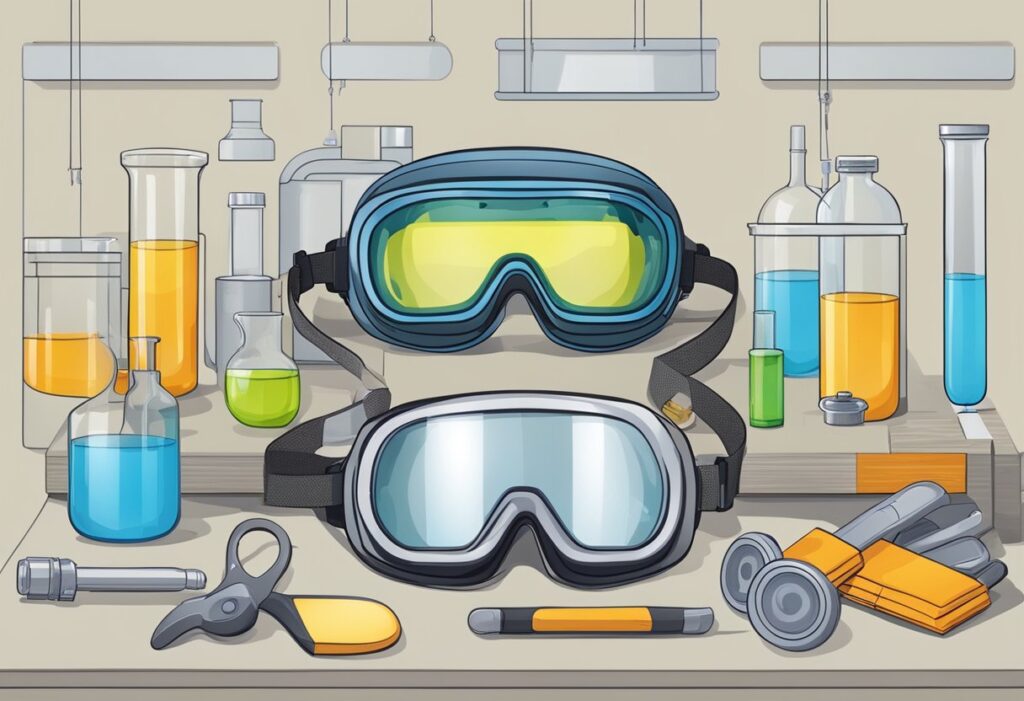
Eye injuries, whether at home, during sports, or at work, are largely preventable. Understanding the types of injuries and their familiar sources of hazards is crucial. With this knowledge, people can take preventative measures to safeguard their eyes. You may take charge of your safety by using protective eyewear, including safety goggles, which can significantly lessen the likelihood of serious injuries. This knowledge makes you feel informed and prepared for potential hazards.
Types Of Eye Injuries
Eye injuries might vary from mild annoyances to catastrophic injuries that cause irreversible blindness. Some common types of eye injuries include:
- Impact injuries: These occur when an object strikes the eye, causing bruising, bleeding, or even a fracture of the bones around the eye.
- Penetrating injuries: These occur when an object punctures the eye, potentially causing severe damage to the internal structures of the eye.
- Chemical splashes: These can cause severe damage to the eye, including burns and blindness.
- Debris or flying debris can cause scratches or cuts on the eye’s surface and foreign bodies that can become embedded in it.
- Projectiles: These can cause blunt force trauma to the eye, which might lead to irreversible damage or possibly blindness.
Common Sources Of Hazards
Hazards that can cause eye injuries can be found in many different settings, including:
- Construction sites can expose workers to flying debris, dust particles, and chemical splashes.
- Manufacturing facilities: These can expose workers to various hazards, including flying debris, splashes, and projectiles.
- Laboratories can expose workers to chemical splashes, debris, and projectiles.
- Sports activities can expose individuals to impact injuries, debris, and projectiles.
Individuals must be aware of the hazards that can lead to eye injuries. Whether it’s flying debris at a construction site, chemical splashes in a laboratory, or impact injuries during sports, understanding these risks is the first step to protecting your eyes. This awareness and appropriate eye protection, like protective eyewear like goggles, can substantially lessen the likelihood of harm.
Safety Goggles Design And Materials
The design and materials used in safety goggles are critical in providing adequate eye protection. Safety goggles should withstand chemicals, impact, and other occupational hazards while remaining lightweight and robust. Understanding these design and material considerations can make the audience feel informed and aware of the factors contributing to their safety.
Polycarbonate Lenses
One of the most critical features of safety goggles is the use of polycarbonate lenses. Polycarbonate is a type of plastic that is lightweight, durable, and resistant to impact. It is also scratch-resistant and can withstand exposure to chemicals and other hazards. Polycarbonate lenses are the go-to for safety goggles because of their impact resistance and UV protection.
Impact Resistance Features
Safety goggles should have features that enhance their impact resistance. These features include side shields, which protect the eyes from debris and other hazards that may come from the sides. Face shields are another option that provides additional protection for the face. Impact resistance is vital in ensuring that the goggles can withstand high-velocity impacts and protect the eyes from serious injury.
Additional Protective Features
Safety goggles may also have additional features that provide further protection. For example, some goggles have tinted lenses that protect against glare and UV radiation, making them suitable for outdoor work or activities. Others have anti-fog coatings that prevent the lenses from fogging in humid environments, ensuring always clear vision. Some goggles also have prescription lenses for those requiring corrective eyewear, ensuring everyone can find a pair of safety goggles that meets their needs. These additional features enhance the protective capabilities of safety goggles and provide a sense of reassurance and security, making them even more effective in preventing eye injuries.
Safety goggles are essential personal protective equipment for anyone in hazardous environments. The design and materials used in safety goggles are critical in ensuring adequate eye protection. Polycarbonate lenses, impact resistance features, and additional protective features are all important considerations when selecting safety goggles.
Regulations And Standards
OSHA Guidelines
If you are concerned about the safety of your employees on the job, you should contact OSHA. Protecting employees from harm is a top priority for OSHA. Thus, companies are required to provide them with PPE. Eye and facial protection are part of these requirements. In 1910.133 and 1926.102, OSHA set face and eye protection requirements.
OSHA requires employers to perform a workplace hazard assessment to identify potential eye and face hazards. Based on the assessment, employers must provide employees with appropriate eye and face protection and ensure that all impacted employees wear the proper eye and facial protection before, during, and after any exposure to flying particles, molten metal, liquid chemicals, acids, caustic liquids, chemical fumes, vapors, or potentially harmful light radiation.
OSHA also requires that eye and face protection be adequately maintained and replaced as necessary. The employer must also train employees on the proper use and care of eye and face protection.
ANSI Z87.1 Standard
Many goods, services, procedures, and infrastructure have voluntary consensus standards developed by the private, non-profit American National Standards Institute (ANSI). ANSI’s Z87.1 standard sets the requirements for eye and face protection devices for occupational and educational applications, guaranteeing that they are up to par in terms of safety and giving employees peace of mind.
The ANSI Z87.1 standard specifies the minimum requirements for designing, performing, testing, and labeling eye and face protection devices. The standard requires the devices to be impact-resistant and protect against other hazards such as radiation, chemicals, and heat.
Employers can use the ANSI Z87.1 standard to ensure that the eye and face protection devices they provide to employees meet the minimum requirements for design, performance, testing, and labeling. The standard also guides the wearing and care of protective eyewear and face masks.
In summary, OSHA and ANSI have established workplace eye and face protection guidelines and standards. Businesses must follow these rules for their employees’ safety.
Safety Goggles In Different Settings
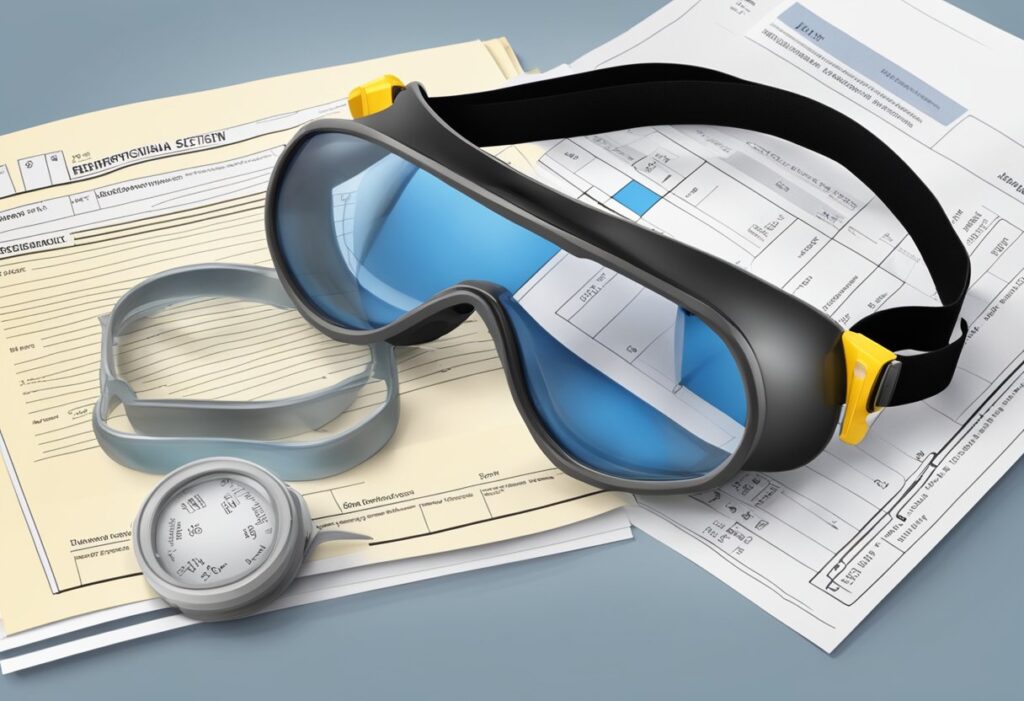
Eye safety is crucial in all industries and settings that involve potential eye hazards. Wearing safety goggles can prevent several eye injuries and even permanent blindness in some situations. This part will review the various situations where safety goggles are crucial.
Industrial And Manufacturing
In industrial and manufacturing environments, workers risk exposure to radiation, toxins, and flying debris. Safety goggles provide adequate protection against these hazards. According to RS Components, safety goggles with side shields are recommended for workers in these settings because they offer better coverage and protection.
Healthcare And Laboratory
Healthcare and laboratory workers are also at risk of eye injuries due to exposure to infectious materials, chemicals, and radiation. Safety goggles provide a barrier against these hazards and can prevent the spread of infections by avoiding contact between the eyes and infectious materials.
Construction And Carpentry
Construction and carpentry workers risk being hurt by splinters, dust, and flying objects. Safety goggles provide adequate protection against these hazards. According to Axiom Products, safety goggles with anti-fog lenses are recommended for workers in these settings because they prevent fogging, which can impair vision and increase the risk of accidents. For enhanced protection and comfort, the 3M GoggleGear 500 Series GG501SGAF is a great option. It features anti-fog and scratch-resistant lenses, ensuring clear vision and durability in demanding environments.
Home And Personal Use
Safety goggles are for professionals, personal projects, and DIY tasks. Many home accidents occur due to a lack of eye protection. Safety goggles can prevent eye injuries from common household hazards such as power tools, cleaning chemicals, and yard work. Choosing the correct type of safety goggles for the task ensures maximum protection.
Safety goggles are essential for protective eyewear in various industries and settings. Employers and employees should take eye safety seriously and provide and use appropriate eye and face protection.
Selecting The Right Safety Goggles
When selecting the proper safety goggles, there are a few factors to consider. This section will cover some of the most important considerations, including prescription safety goggles, fit and comfort, and specialized safety goggles.
Prescription Safety Goggles
Prescription safety goggles are an absolute need for people who wear corrective lenses. These goggles can have access to corrective glasses that allow for clear vision while protecting the eyes from potential hazards. It’s essential to see an eye doctor or optometrist to ensure the prescription is current and correct.
Fit And Comfort Considerations
The ideal fit for safety goggles is a snug but comfortable fit around the eyes. It’s essential to try on different styles and sizes to find the best fit. Adjustable straps and a padded interior can help ensure a snug fit.
Specialized Safety Goggles
Different work environments may require specialized safety goggles. For example, those working with chemicals or fumes should wear goggles with special filters to protect against hazardous substances. Welders should wear goggles and a welding helmet to protect against sparks and molten metal. Those working with UV radiation should wear goggles with UV protection.
It’s essential to consider the specific hazards of the work environment and select goggles that offer the appropriate level of protection.
Safety goggles are essential personal protective equipment that can prevent eye injuries from impacts, splash hazards, fine particles, and more. It’s critical to select goggles that provide clear vision, style, and protection against risks. Proper care and cleaning of safety goggles can ensure they remain effective and provide long-lasting eye protection. In case of eye injuries, seeking medical attention right away is essential.
Maintenance And Care Of Safety Goggles
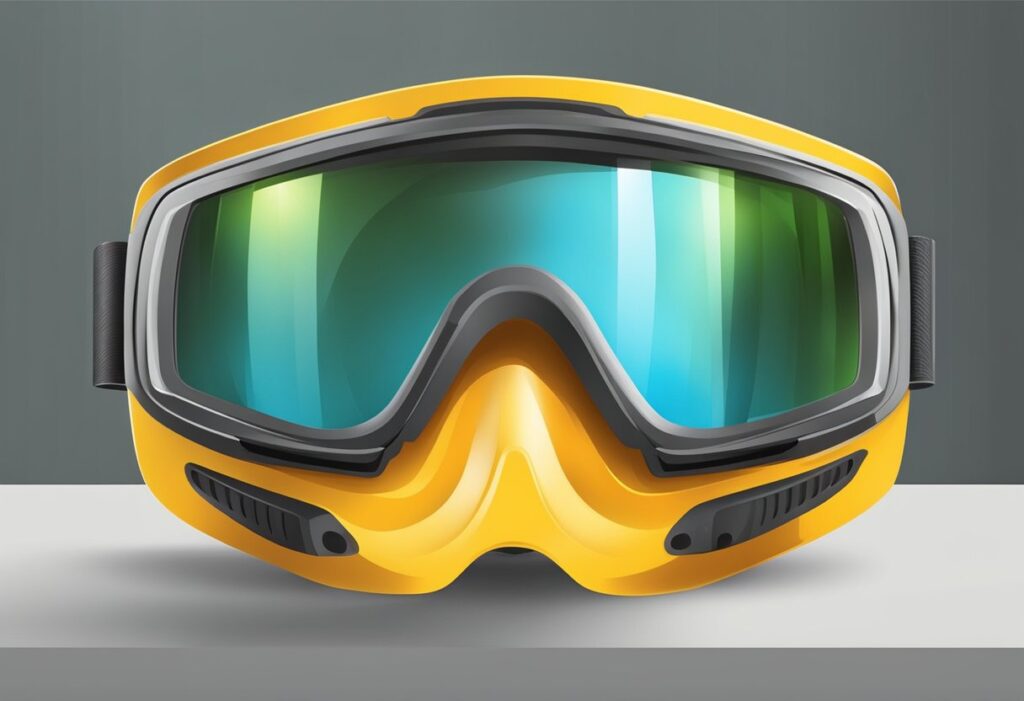
Proper maintenance and care of safety goggles are essential to maintaining their effectiveness and extending lifespan. Maintaining your safety eyewear is easy if you follow these steps.
Cleaning And Storage
Cleaning your safety goggles now and then ensures clear vision and allows you to look for indications of damage or wear that could reduce their efficiency. To clean the lenses:
- Use a gentle, lint-free cloth.
- Be careful not to scratch the lenses or harm the coating with abrasive objects. If the goggles are particularly dirty, rinse them with water and use a mild soap solution to clean them.
- After cleaning the goggles with a gentle cloth, store them in their case to prevent damage.
Inspection And Replacement
Inspect your safety goggles regularly to ensure that they are in good condition. Check the lenses for scratches, cracks, or other damage that may impair vision. Look for signs of wear or damage to the frame or strap. If you notice any problems, replace the goggles immediately. It is also essential to replace your safety goggles periodically, even if they appear in good condition. Over time, the lenses may become scratched, or the frame may become less durable, reducing the effectiveness of the goggles.
Routine maintenance and care of safety goggles are essential to maintain their effectiveness and extend their lifespan. By following these tips, you can ensure that your safety goggles provide the protection you need to stay safe on the job.
List Of The Best Safety Goggles
Safety goggles protect our eyes from hazards that can cause serious injury at work. We should prioritize eye safety by choosing the goggles that fit our tasks. Below is our list of the best safety goggles available to help keep our vision safe on the job.
DEWALT DPG82 Concealer Safety Goggles
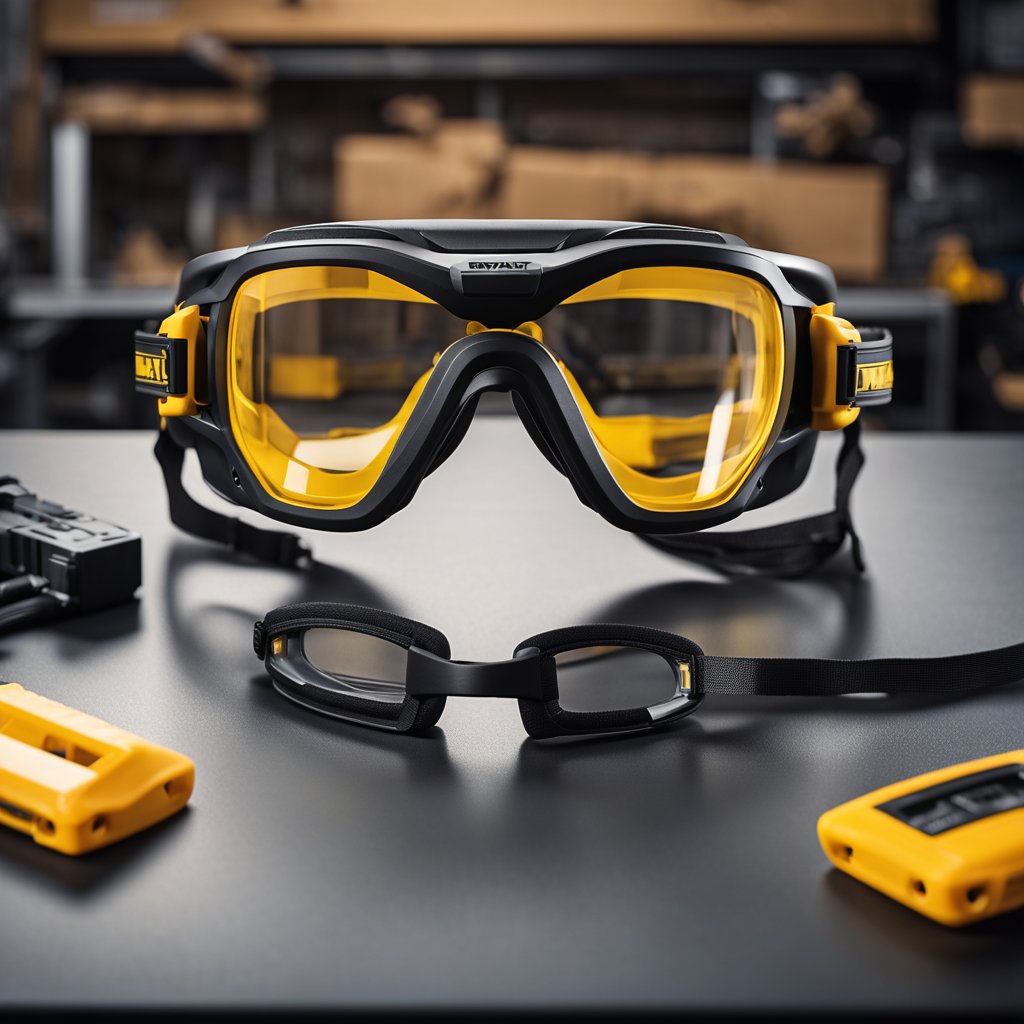
During our recent DIY projects, the DEWALT DPG82 Concealer Safety Goggles proved to be a reliable companion. The snug fit, thanks to the soft rubber seal, provided a sense of security and kept dust at bay, especially during tasks like sanding or working with debris-creating materials.
The anti-fog lens is a standout feature. We appreciated that it did an excellent job of limiting fogging while we worked. Sometimes, we experience slight fogging in colder conditions, but this is normal for goggles. Still, the overall visibility remained excellent, which was a significant plus.
Another nice touch is the adjustable head strap. We found it easy to customize the fit for comfort. The goggles also met safety standards, giving us peace of mind while working on various projects. If you’re looking for a solid pair of safety goggles, we recommend giving the DEWALT DPG82 a try.
Pros
- Excellent comfort with a snug fit.
- Anti-fog coating keeps our vision clear.
- Durable construction protects against dust and debris.
Cons
- Some fogging might still occur in extreme conditions.
- The design may not suit everyone’s style.
- They might feel bulky for some users.
NoCry Safety Goggles

The NoCry safety goggles impressed us with their versatility and performance across various tasks. They comfortably fit over our prescription glasses, ensuring clear vision and protection. The soft TPR seal effectively blocked dust and debris, making them suitable for all-day wear. The wide-angle lenses and anti-fog vents further enhanced our field of vision and visibility, even in humid conditions.
The NoCry goggles, with their wraparound design and wide-angle lenses, offered a broad field of vision, instilling a sense of confidence, especially when working on detailed projects or in busy environments.
While the goggles performed admirably for our needs, we did hear feedback from some users who found them snug if they had larger frames for their glasses. Additionally, they may not provide the chemical protection needed for specific industrial applications. Despite these minor concerns, these goggles offer great value for anyone seeking reliable eye protection.
Pros
- It fits comfortably over most prescription glasses
- Offers excellent anti-fog and UV protection
- Comfortable enough for all-day wear
Cons
- It may not fit well with all eyeglass styles
- Some users may find them too tight around the face
- Limited chemical resistance for specific tasks
Honmein Safety Goggles
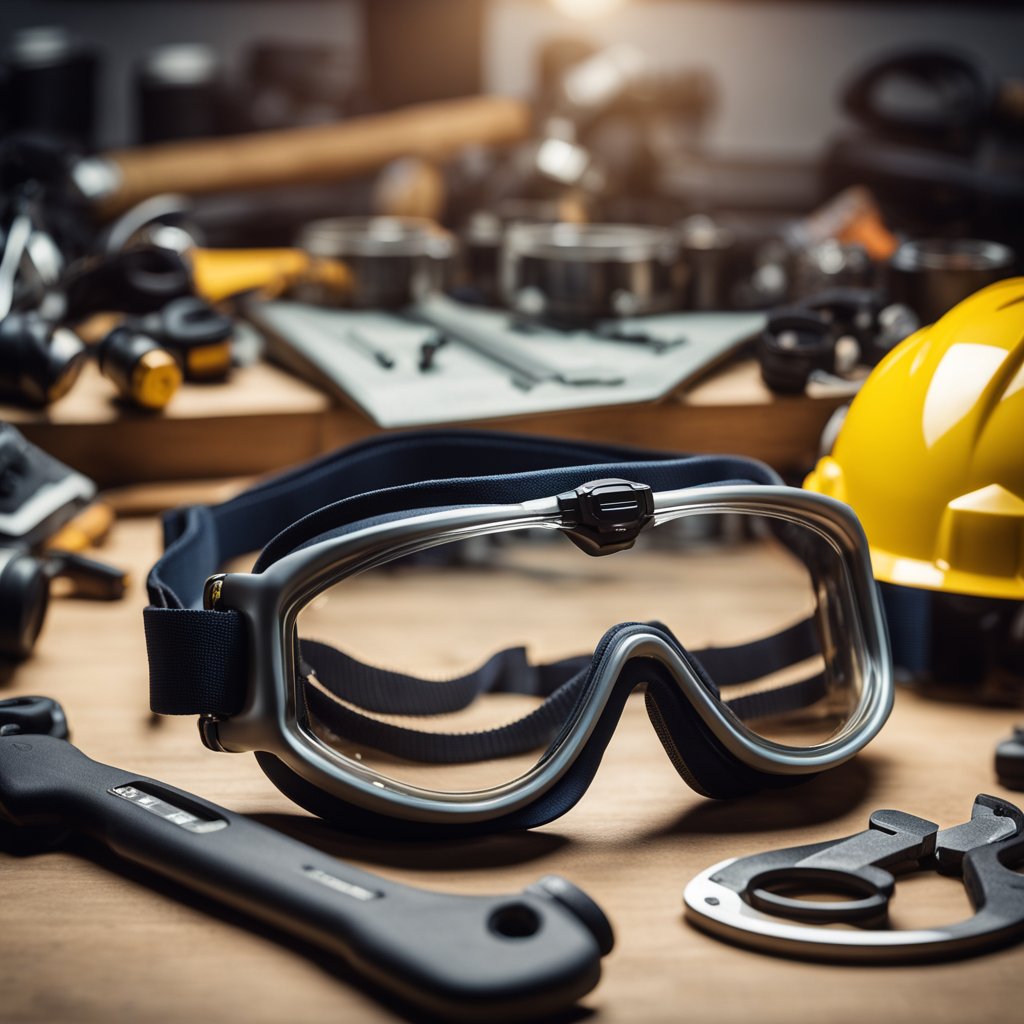
We recently tried the Honmein Safety Goggles and found them easy to adjust for a snug fit. They comfortably fit over our regular glasses, making them perfect for those who need additional vision support. This feature is beneficial when lawn mowing or working in the garage.
The Honmein goggles, with their practical anti-fog feature, kept our vision clear even in humid environments, allowing us to focus on the task at hand and work efficiently.
A few minor drawbacks are worth mentioning. We noticed a bit of distortion when looking through the lenses, which wasn’t a dealbreaker but could be distracting for some. Additionally, getting a perfect seal may take a little extra effort. The Honmein goggles are a great addition to our safety gear collection because they provide good protection at a reasonable price.
Pros
- It is a good fit over regular glasses for comfortable wear.
- The practical anti-fog feature works well in humid conditions.
- Versatile use for different activities like woodworking and outdoor chores.
Cons
- Slight distortion can occur, affecting some line-of-sight clarity.
- Getting a tight seal may require some adjustments.
- Limited UV protection is available.
MELASA Safety Goggles
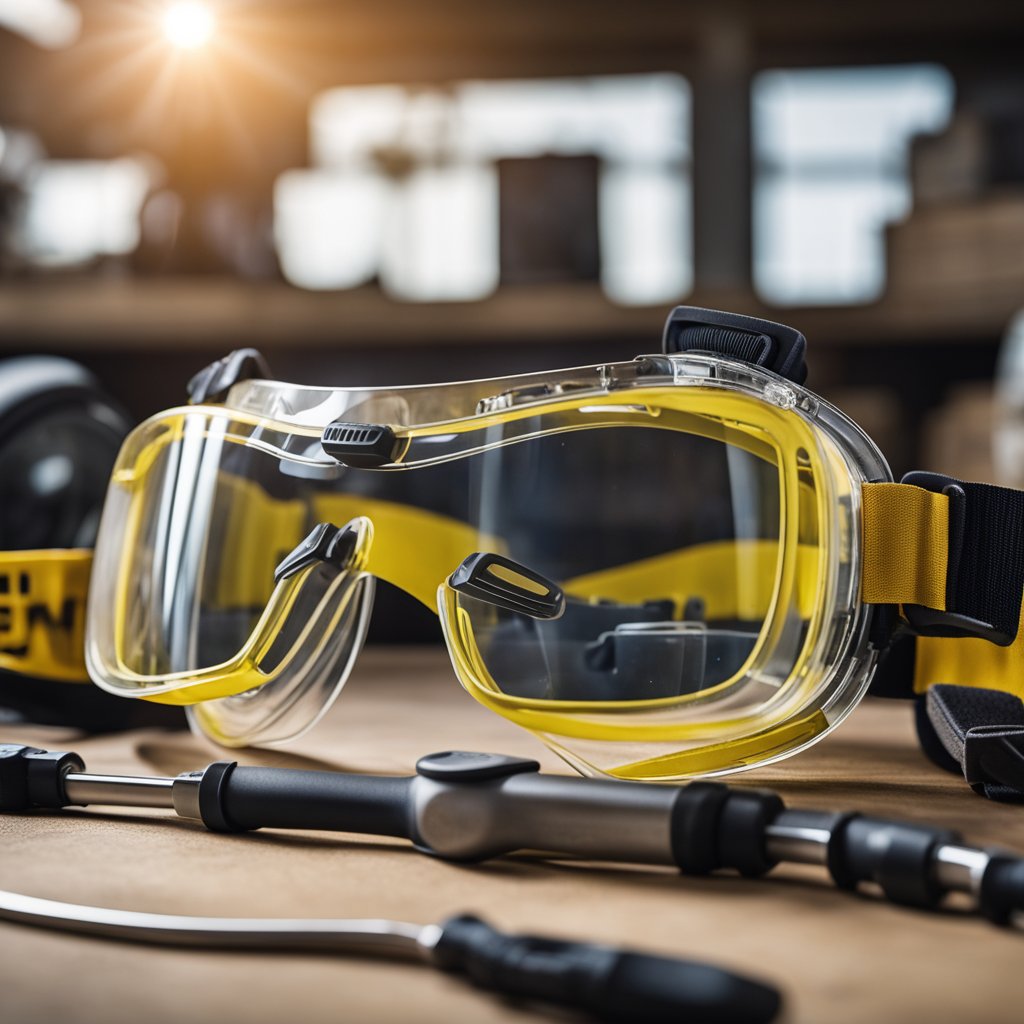
We recently tried the MELASA Safety Goggles for several tasks, and they stood out for their ability to fit snugly over regular eyeglasses. This feature is beneficial when working in environments where debris is a worry, like mowing the lawn or doing DIY projects. We felt confident knowing our eyes were fully protected without worrying about stray bits flying in.
Another major plus is the anti-fog lens. We’ve worn these goggles in different settings, and they remained clear throughout our activities. The lightweight design makes a difference; they don’t feel burdened during longer tasks. We appreciated the wraparound PVC frame, providing comfort and adequate protection.
While the goggles work well in most situations, we noticed a few drawbacks. After extended wear, they can become uncomfortable, and the edges may irritate our skin. Also, if you’re wearing an N95 mask, fogging can happen. Overall, for the price, these goggles are a reliable choice for safety and comfort.
Pros
- It’s a good fit over most eyeglasses.
- Anti-fog and clear visibility.
- Adjustable strap for a secure fit.
Cons
- Can feel uncomfortable after prolonged use.
- Fogging may occur with specific masks.
- Slightly sharp edges may irritate the skin.
Frequently Asked Questions
What Are The Primary Reasons For Wearing Safety Goggles In A Laboratory Setting?
Protective eyewear is necessary in every laboratory environment; safety goggles are integral to this gear. They protect against chemical splashes, flying debris, and other hazards that can cause eye injuries. In a laboratory setting, safety goggles are necessary to protect the eyes from exposure to harmful chemicals, which can cause burns and other serious injuries.
How Do Safety Goggles Protect Construction Environments?
Safety goggles protect workers’ eyes from Injuries caused by airborne particles such as dust, flying debris, and other similar hazards on construction sites. Additionally, they shield the eyes from damaging ultraviolet light, which can wreak havoc over time. Construction workers must wear safety eyewear to protect themselves from harm and maintain a risk-free workplace.
Why Are Safety Goggles A Good Investment For Classroom Instruction?
In educational workshops, safety goggles protect students from exposure to hazardous materials and flying debris. They also help instill safe laboratory practices and promote a safety culture. By wearing safety goggles, students learn to take responsibility for their and others’ safety.
In What Ways Do Safety Goggles Contribute To Workplace Eye Protection?
Safety goggles are a must-have item for employees’ PPE in many industries. They protect against various hazards, including chemicals, flying debris, and other airborne particles. Wearing safety goggles can prevent eye injuries and ensure a safe working environment.
Why Is It Crucial For Medical Professionals To Utilize Safety Goggles?
Medical professionals are vulnerable to infectious infections, chemicals, and other potentially dangerous substances, all of which can lead to eye damage. Safety goggles protect against these hazards, helping to make the workplace safe for employees and avoid harm to their eyes. By utilizing safety goggles, medical professionals can protect their eyes and the eyes of their patients.
Can You Outline The Key Advantages Of Using Eye Protection In Industrial Workshops?
Eye protection is crucial in industrial workshops, where workers might be at risk of various hazards, including flying debris, chemicals, and other harmful substances. Safety goggles protect against these hazards, helping to make the workplace safe for employees and avoid harm to their eyes.

